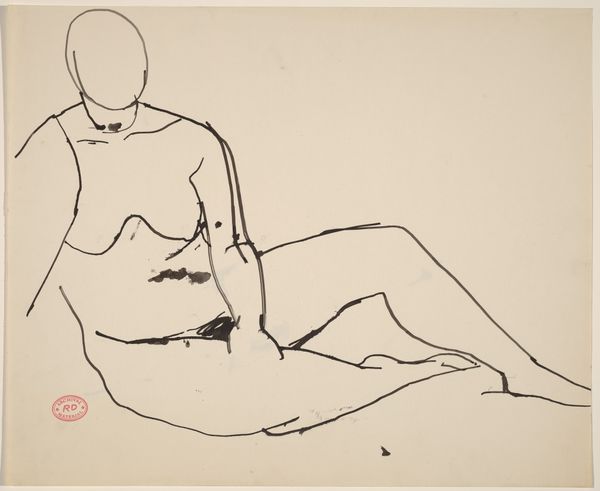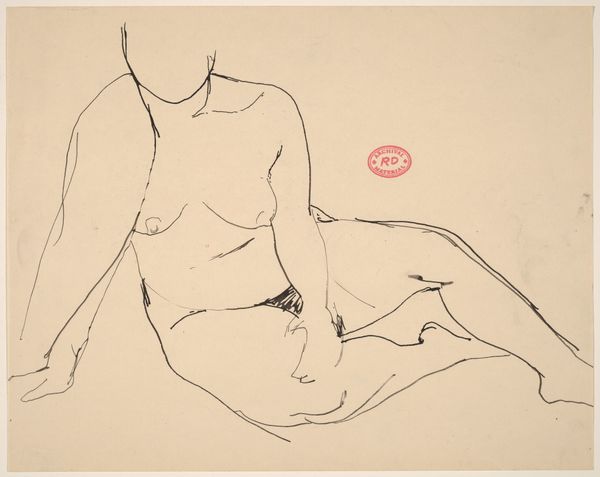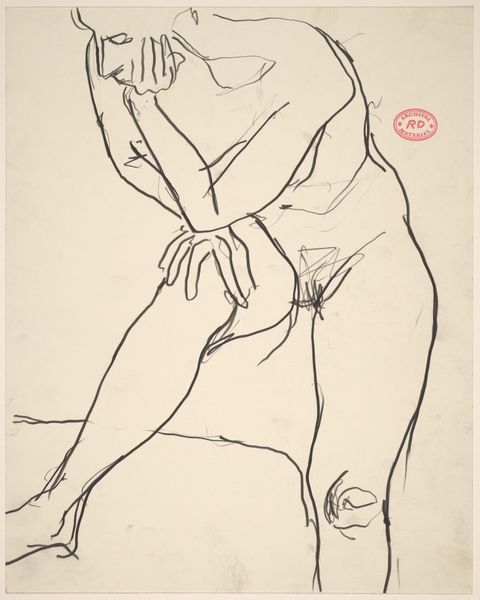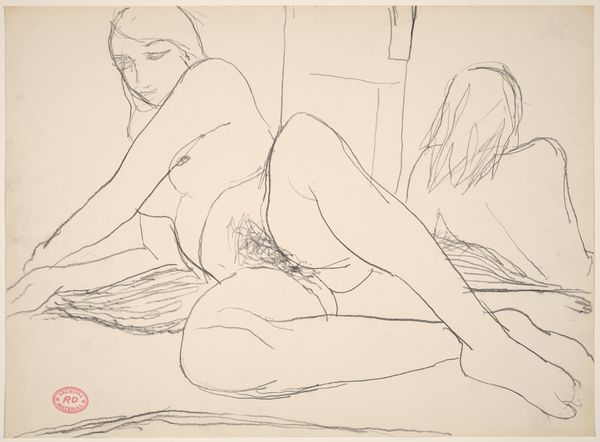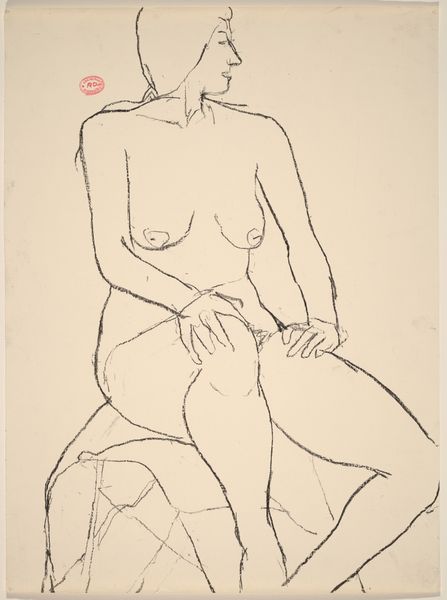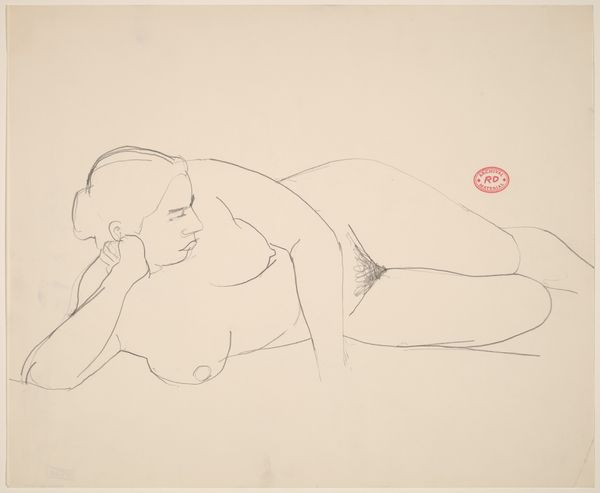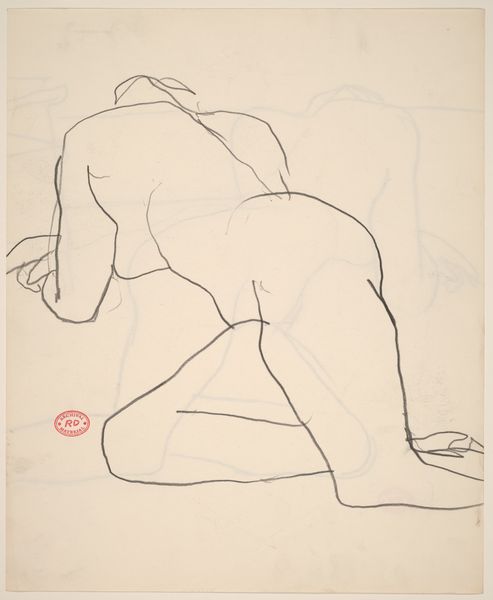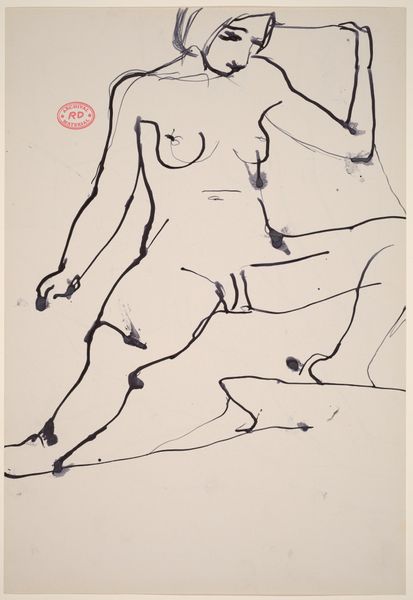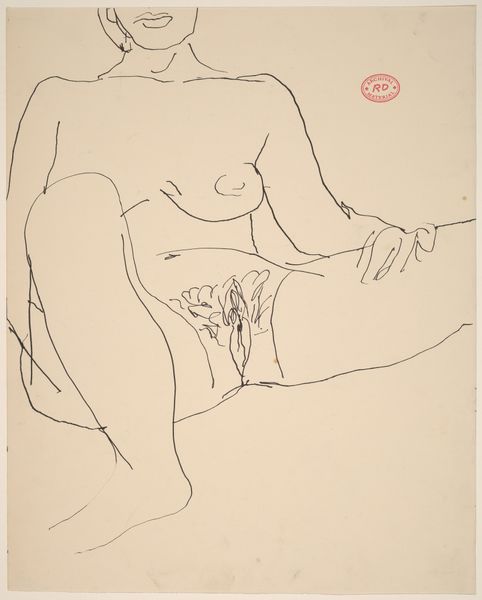![Untitled [seated nude leaning back on her right hand] by Richard Diebenkorn](/_next/image?url=https%3A%2F%2Fd2w8kbdekdi1gv.cloudfront.net%2FeyJidWNrZXQiOiAiYXJ0ZXJhLWltYWdlcy1idWNrZXQiLCAia2V5IjogImFydHdvcmtzLzRjNWFjOWE0LTBiMTYtNDBkOS1iOGJhLWYwMzFlNjMwNDFiYy80YzVhYzlhNC0wYjE2LTQwZDktYjhiYS1mMDMxZTYzMDQxYmNfZnVsbC5qcGciLCAiZWRpdHMiOiB7InJlc2l6ZSI6IHsid2lkdGgiOiAxOTIwLCAiaGVpZ2h0IjogMTkyMCwgImZpdCI6ICJpbnNpZGUifX19&w=3840&q=75)
Untitled [seated nude leaning back on her right hand] 1955 - 1967
0:00
0:00
drawing, ink
#
portrait
#
drawing
#
ink drawing
#
pen illustration
#
pen sketch
#
figuration
#
bay-area-figurative-movement
#
ink
#
nude
#
modernism
Dimensions: overall: 43.3 x 58 cm (17 1/16 x 22 13/16 in.)
Copyright: National Gallery of Art: CC0 1.0
Editor: This is Richard Diebenkorn’s "Untitled [seated nude leaning back on her right hand]," an ink drawing created sometime between 1955 and 1967. I’m really struck by the confidence of the line, but also its seeming simplicity. What do you see in this piece, especially given the time it was made? Curator: It's tempting to see Diebenkorn's nudes as a purely formal exercise, explorations of line and form characteristic of the mid-century modernism. However, we have to place it within its historical moment. Consider the shifting social mores of the 50s and 60s. Nudity, of course, wasn’t new to art, but how was it being presented and consumed then? What statements were artists making, or perhaps resisting? Editor: That's a good point. Was he engaging with any specific trends of the time in depicting the female body, or maybe pushing back against something? Curator: Abstract Expressionism dominated much of the art world in the decades before this piece was made, focusing heavily on the artist's own emotional expression. Diebenkorn, while associated with Abstract Expressionism, seemed more interested in a return to figuration. Think about how popular culture portrayed women during that era, often as very polished, almost artificial images. Is this drawing reinforcing or subverting such portrayals? The loose lines, the vulnerable pose... what might those details communicate to a viewer in the 1960s? Editor: It feels like he's prioritizing naturalism over idealization. It’s interesting to think about this as potentially challenging the dominant representations of women at that time. Curator: Precisely. Art always participates in a dialogue, both with its history and its present. Recognizing that helps us uncover layers of meaning beyond the immediately visible. Editor: This gives me a lot to think about. I initially saw this as a straightforward sketch, but I can now see its place within a much broader social and cultural conversation.
Comments
No comments
Be the first to comment and join the conversation on the ultimate creative platform.



